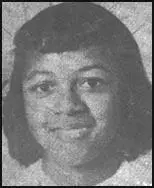On this day on 22nd May
On this day in 1804 the Lewis and Clark Expedition departs from St. Charles, Missouri. Soon after Thomas Jefferson became president in 1801 he appointed Meriwether Lewis as his personal secretary. At this time Jefferson read about the adventures of Alexander Mackenzie. In his book, Voyages from Montreal, Mackenzie had described his two expeditions where he had tried to find a navigable route to the Pacific Ocean. For the next few months Jefferson and Lewis discussed the possibility of exploring these unknown lands.
As part of his preparation, Lewis was sent to the University of Pennsylvania to study botany, natural history, medicine, mineralogy and celestial navigation. One of his tutors was Benjamin Rush, who asked Lewis to find out from the Native Americans about their burial customs, diet, medicines, breast feeding, bathing, crime and religious practices.
On 18th January, 1803, President Jefferson requested permission from Congress to explore the vast lands to the west of the Mississippi. Jefferson claimed that there were "great supplies of fur and peltry" to be obtained from the Native Americans living in this area. He argued that the expedition would provide opportunities for "extending the external commerce of the United States".
The following month Congress approved the venture that became known as the Corps of Discovery. Meriwether Lewis selected William Clark as his co-commander of the expedition. While the two men prepared for their journey, Jefferson's emissaries in Paris were involved in negotiating in Paris for the sale of the French possessions in America. In April 1803 the two parties agreed on the terms of the Louisiana Purchase. For the cost of $15 million, the American government purchased 800,000 square miles between the Mississippi and the Rocky Mountains.
Lewis and Clark assembled a party of 30 men. The group included animal hunters, boatmen, carpenters, soldiers and blacksmiths. They took with them a Native American to serve as an interpreter. The main source of transport was a 60-foot keelboat (barge). Lewis and Clark also spent $669 for presents for those people they met on their journey. This included colored beads, calico shirts, handkerchiefs, mirrors, bells, needles, thimbles, ribbons, kettles and brass curtain rings. They also took dozens of peace medals for the Native Americans. On one side was a picture of Jefferson and on the other side was two hands clasped in friendship.
The expedition began when their keelboat left St. Louis on 14th May 1803. Their main problem during the early weeks was the attacks from gnats and mosquitoes. In his journal Lewis complained that they "infest us in such a manner that we can scarcely exist... they are so numerous that we frequently get them in our throats as we breath".
It was eleven weeks before the party encountered its first Native Americans. The Otos responded well to being given gifts but did not understand the speech made by Lewis that included the following: "The great chief of the seventeen great nations of America, impelled by his parental regard for his newly adopted children on the troubled waters, has sent us out to clear the road. He has commanded his war chiefs to undertake this long journey. You are to live in peace with all the white men, for they are his children; neither wage war against the red men, your neighbours, for they are equally his children and is bound to protect them. "
On 16th August, a member of the party, Moses Read, deserted. He was captured and was punished by being forced "to run the gauntlet four times through the party". A few days later Sergeant Charles Floyd died after suffering from a severe stomach ache.
At the mouth of the Teton River in South Dakota the party made contact with the Sioux. They were unimpressed with the gifts they received and made attempts to stop the party progressing by raising their bows. Lewis responded by ordering the cannons to be aimed at the Sioux warriors. At this the Sioux withdrew and the expedition was allowed to continue.
When the party reached the mouth of the Knife River they decided to make winter camp among the friendly Mandans. The men erected a wooden fort. It was well built and the men were able to survive temperatures of 45 degrees below zero. During the next five months Lewis had to amputate the frostbitten toes of several men in his party. Clark and Lewis also spent time interviewing Mandans about the local terrain. With this information they were able to produce maps that they felt would help them find their way to the Pacific Ocean.
Before they left on their next stage of their journey Clark and Lewis recruited two people living in a neighbouring Minnetaree village. Toussaint Charbonneau, was a French-Canadian, who could speak English and various Native American languages. The other one was Sacajawea, a Shoshoni who had been captured by the Minnetarees when she was about 11 years old and later sold Charbonneau as a slave. Sacajawea, although only 16 years of age was pregnant with Charbonneau's child.
On 7th April, 1805, the Corps of Discovery headed West. A few weeks later Meriwether Lewis shot a buffalo. Before he had time to reload he was attacked by a bear. Lewis later wrote: "It was an open level plain, not a bush within miles nor a tree within less than three hundred yards. He pitched at me, open mouthed, and full speed, I ran about 80 yards and found he gained on me fast, I then ran into the water the idea struck me to to get into the water to such a depth that I could stand and he would be obliged to swim... he declined to combat on such unequal grounds and retreated."
The Lewis and Clark party saw the Rocky Mountains for the first time on 26th May, 1805. They proceeded up the Missouri they eventually reached the Great Falls. Lewis recorded that the torrent was "300 yards wide and at least 80 feet high". It took the party 24 days to get around the falls. The party was now in Shoshoni territory and Sacajawea began to recognise landmarks and helped guide the party to the Columbia River. She was also able to introduce Lewis and Clark to her brother, Chief Cameahwait. Although reunited with her family, Sacajawea decided to continue with her work as a guide to the Corps of Discovery.
Over the next weeks the party encountered several different tribes including the Nez Perce, Chinooks and Clatsops. On 7th December, 1805, the expedition reached the Pacific Ocean. The men built a fort and remained there until heading east on 23rd March, 1806. The return journey was marred by an attempt by a group of Blackfeet to steal rifles. In the fighting that took place one warrior was killed and another was seriously wounded.
On 23rd September, 1806, the party arrived back at St. Louis. The 28 month expedition produced a considerable body of data concerning the topographical features of the county and its natural resources. They also provided details of animals and birds that lived in the territory they explored.
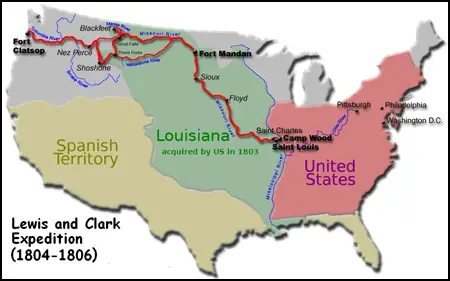
On this day in 1856 Preston Brooks uses physical violence against anti-slavery campaigner Charles Sumner in the hall of the United States Senate. In 1851, with the support of the Democratic Party, Sumner was elected to Congress. He now became the Senate's leading opponent of slavery. After one speech Sumner made against pro-slavery groups in Kansas in 1856 he was beaten unconscious by Preston Brooks, a congressman from South Carolina. His injuries stopped him from attending the Senate for the next three years.
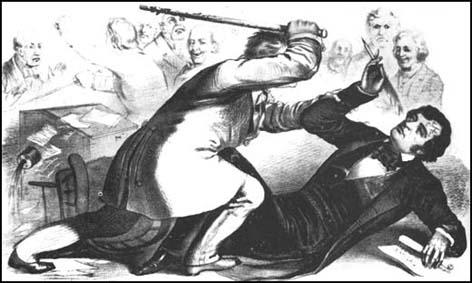
On this day in 1859 Arthur Conan Doyle, the son of Charles Doyle and Mary Foley, was born in Edinburgh . Arthur's father was an alcoholic and the family was always short of money. At school, Arthur developed a strong interest in the books written by Sir Walter Scott and Edgar Allan Poe.
Conan Doyle studied at Edinburgh University and helped to fund his course by working as a surgeon on Hope, a 400 ton whaler on a seven month voyage to the Arctic. The following year he worked on Mayumba, a passenger ship bound for West Africa. On this voyage Conan Doyle nearly died of typhoid.
On his return, Conan Doyle set up as a doctor in Southsea, a suburb of Portsmouth. With very few patients, Conan Doyle attempted to make money by writing detective stories. His main character, Sherlock Holmes, was based on Dr. Joseph Bell, a surgeon and criminal psychologist, who lectured at Edinburgh Infirmary.
In 1891 Conan Doyle published six Sherlock Holmes stories in the Strand Magazine. The following year he was paid £1,000 for a whole series on Sherlock Holmes. Conan Doyle really wanted to write historical novels like his hero, Sir Walter Scott, and in 1893 decided to kill off Sherlock Holmes in the story, The Final Problem. However, after coming under considerable pressure from his fans, he returned to write his best known detective story, The Hound of the Baskervilles (1902).
Conan Doyle served as a doctor in the Boer War (1899-1902) and wrote The War in South Africa (1902), where he attempted to justify Britain's actions during the war.
On 2nd September, 1914, soon after the start of the First World War, the Liberal politician, Charles Masterman, the head of the War Propaganda Bureau, organised a secret meeting of Britain's leading writers. to discuss ways of best promoting Britain's interests during the war. Those who attended to discuss the best way of promoting Britain's interests during the war included Conan Doyle, Arnold Bennett, John Masefield, Ford Madox Ford, William Archer, G. K. Chesterton, Sir Henry Newbolt, John Galsworthy, Thomas Hardy, Rudyard Kipling, Gilbert Parker, G. M. Trevelyan and H. G. Wells.
All the writers present at the conference agreed to the utmost secrecy, and it was not until 1935 that the activities of the War Propaganda Bureau became known to the general public. Several of the men who attending the meeting agreed to write pamphlets and books that would promote the government's view of the situation.
In 1914 Conan Doyle wrote the recruiting pamphlet, To Arms!. The WPB arranged for Conan Doyle to go the Western Front and his pamphlet, A Visit to the Three Fronts was published in 1916. During the war Doyle also wrote his six volume history, The British Campaign in France and Flanders. Conan Doyle also wrote on the First World War for the Daily Chronicle.
Although fifty-five when the war Conan Doyle also joined the Crowborough Company of the Sixth Royal Sussex Volunteer Regiment and served as a private throughout the war. His son, Kingsley Conan Doyle, joined the British Army and was wounded at the Somme. He died in October, 1917, after developing pneumonia.
After the war Conan Doyle wrote several books on spiritualism including The New Revelation (1918) and The History of Spiritualism (1926).
Arthur Conan Doyle died at Crowborough on 7th July 1930.
On this day in 1870 Eva Gore-Booth, the daughter of Sir Henry Gore-Booth, was born at Lissadell House, County Sligo, Ireland on 22nd May, 1870. Gore-Booth, always attempted to act as a good landlord and provided free food for his tenants during the 1879-80 famine. It was probably the example of Gore-Booth that help develop in his two daughters, Eva and Constance Gore-Booth, a deep concern for the poor.
According to her biographer, Gifford Lewis, Eva Gore-Booth was "studious and introspective, she was quite different from her flamboyant and more robust elder sister Constance... in appearance she was willowy and frail, and she attracted attention with her fair hair and eager expression".
Eva suffered from poor health and in 1896 she travelled to Italy where she met Esther Roper. Her biographer, Margaret M. Jensen, argues that they "became immediate and lifelong companions". Roper was very interested in the subject of women's suffrage and was secretary of the Manchester National Society for Women's Suffrage. In this role she tried to recruit working-class women from the emerging trade union movement. The author of Eva Gore-Booth and Esther Roper (1998) has argued: "For the first time Eva was able to talk to a kindred spirit. Captivated by the woman and her cause, she impulsively decided to leave Ireland and join Esther in the suffrage cause in Manchester."
In 1897 Eva moved into Esther's home in Manchester. At first under Esther's influence she devoted herself to trade unionism and women's suffrage, but later became involved in adult education for women and working with the Manchester University Settlement. In 1901, Christabel Pankhurst, who was at that time a student at Manchester University, joined their trade union campaign. She also met her mother, Emmeline Pankhurst, who was a member of the the Manchester branch of the NUWSS.
Sylvia Pankhurst also got to know Eva during this period. Later she was to say: "Eva Gore-Booth had a personality of great charm... Christabel adored her, and when Eva suffered from neuralgia, as often happened, would sit with her for hours massaging her head. To all of us at home this seemed remarkable indeed, for Christabel had never been willing to act the nurse to any other human being."
Fran Abrams the author of Freedom's Cause: Lives of the Suffragettes (2003), has argued that: "Christabel Pankhurst had formed a close friendship with Esther Roper and Eva Gore-Booth, suffrage campaigners who lived together in Manchester. Her relationship with Eva, in particular, had become intense enough to excite a great deal of comment from her family - according to Sylvia Pankhurst."
In 1903 Eva and Esther established the Lancashire and Cheshire Women's Textile and Other Workers Representation Committee. That year they also they organized a suffrage petition with 30,000 signatures. Eva also co-edited the Women's Labour News, a quarterly journal aimed at uniting women workers. She was also active in the socialist group, the Independent Labour Party.
Emmeline Pankhurst, with the help of her three daughters,Christabel Pankhurst, Sylvia Pankhurst and Adela Pankhurst, formed the Women's Social and Political Union (WSPU) in 1903. At first the main aim of the organisation was to recruit more working class women into the struggle for the vote and therefore initially received the support of Esther and Eva. However, she later disapproved of their use of violence.
Eva Gore-Booth published a volumes of poetry, Unseen Kings in 1904. She continued to be interested in the struggle for women's rights and in the 1908 joined her sister, Constance Markievicz, and other suffragettes, including Annie Kenney, May Billinghurst and Adela Pankhurst, in the campaign against Winston Churchill in the parliamentary election in Manchester North West.
In 1913 Eva and Esther Roper moved to London. Two days after the British government declared war on Germany on 4th August 1914, the NUWSS declared that it was suspending all political activity until the conflict was over. Although its leader, Millicent Fawcett, supported the First World War effort she did not follow the WSPU strategy of becoming involved in persuading young men to join the armed forces. Eva and Esther were both pacifists and disagreed with this strategy. Despite pressure from the majority of members, who held similiar views to Eva, Fawcett refused to argue against the war. Her biographer, Ray Strachey, argued: "She stood like a rock in their path, opposing herself with all the great weight of her personal popularity and prestige to their use of the machinery and name of the union."
In 1914 they joined the No-Conscription Fellowship, an organisation formed by Clifford Allen and Fenner Brockway. The NCF required its members to "refuse from conscientious motives to bear arms because they consider human life to be sacred." As Martin Ceadel, the author of Pacifism in Britain 1914-1945 (1980) has pointed out: "Though limiting itself to campaigning against conscription, the N.C.F.'s basis was explicitly pacifist rather than merely voluntarist.... In particular, it proved an efficient information and welfare service for all objectors; although its unresolved internal division over whether its function was to ensure respect for the pacifist conscience or to combat conscription by any means"
Eva and Esther resigned from the NUWSS over the issue of the First World War and helped establish the Women's Peace Crusade. Other members included Charlotte Despard, Selina Cooper, Margaret Bondfield, Ethel Snowden, Katherine Glasier, Helen Crawfurd, Teresa Billington-Greig, Elizabeth How-Martyn, Dora Marsden, Helena Normanton, Margaret Nevinson, Hanna Sheehy-Skeffington and Mary Barbour.
In 1916 she published another volume of poetry, Death of Fionavar (1916). Eva was also a member of a group that opposed gender stereotyping and helped publish its journal Urania. She was the leading figure who organised the successful reprieve of the death sentence passed on her sister Constance Markievicz following the Easter Rising.
Eva Gore-Booth died of cancer in Hampstead on 30th June, 1926. Esther Roper was at her bedside and remarked: "At the end she looked up with that exquisite smile that always lighted up her face when she saw one she loved, then closed her eyes and was at peace." Gore-Booth was buried in St John's Churchyard. Her sister, Constance Markievicz, did not attend the funeral, saying she "simply could not face it all." After her death Roper edited and introduced The Poems of Eva Gore-Booth (1929).
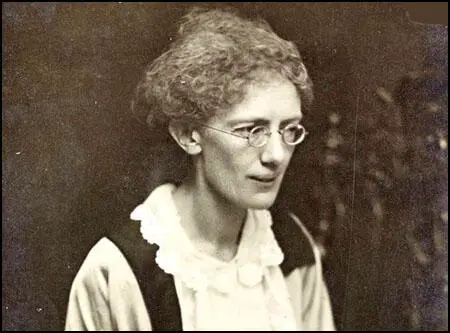
On this day in 1905 Tom Driberg was born at Crowborough, East Sussex, on 22nd May 1905. His father, John Driberg, worked for the Indian Civil Service. Educated at Lancing College, Driberg joined the Communist Party when he was fifteen.
Driberg went to Christ Church, Oxford, and studied classics (1924-27) but left without graduating. During the General Strike Driberg worked at party headquarters and began writing for the communist newspaper, Sunday Worker.
In 1928 he joined the Daily Express as a gossip columnist. He came to the attention of Lord Beaverbrook who gave him his own column "These Names Makes News". It was at this time that Driberg began using the pen name, William Hickey, a famous 18th century diarist.
Driberg was a strong opponent of the British government's Non-Intervention policy in the Spanish Civil War. He visited Spain as a journalist during the war. In January 1939, he helped to take food supplies to the Republican Army fighting General Francisco Franco and his nationalist forces.
Maxwell Knight, head of B5b, a unit that conducted the monitoring of political subversion, recruited Driberg as an agent for MI5. In 1941 Anthony Blunt informed Harry Pollitt that Driberg was an informer and he was expelled from the Communist Party. Knight now suspected that his unit had been infiltrated by the KGB but it was not until after the war that MI5 discovered that Blunt was responsible for exposing Driberg.
In 1942 he was elected to the House of Commons at the Maldon by-election as an Independent. In 1943 Driberg was dismissed from the Daily Express and transferred to the Reynold's News. He later wrote for the Daily Mail and the New Statesman.
During the Second World War Driberg joined the Labour Party and in 1945 retained his seat in Parliament. In 1949 he was elected to the party's National Executive but he was severely censured in 1950 for gross neglect of his parliamentary duties by taking three months off to report on the Korean War.
In his book, Spycatcher (1987), Peter Wright, who had previously worked for MI5 claimed: "Since the 1960s a wealth of material about the penetration of the latter two bodies had been flowing into MI5's files, principally from two Czechoslovakian defectors named Frolik and August. They named a series of Labour Party politicians and trade union leaders as Eastern Bloc agents... Tom Driberg was another MP named by the Czech defectors. I went to see Driberg myself, and he finally admitted that he was providing material to a Czech controller for money. For a while we ran Driberg on, but apart from picking up a mass of salacious detail about Labour Party peccadilloes, he had nothing of interest for us."
Driberg was commissioned to write a book on Soviet spy, Guy Burgess, who he become friendly with in the 1940s. During his research for the book Driberg travelled to Moscow to interview Burgess. He later remarked: "He (Burgess) had lately moved into a new flat in Moscow, for which I had sent him a good deal of Scandinavian furniture from London, and I was able to spend a weekend at his dacha, in a country village about an hour's drive (by official pool car)."
Both Driberg and Burgess were homosexuals and it seems that they had some sort of sexual relationship while in the Soviet Union. According to the Mitrokhin Archive, Driberg was photographed in a homosexual encounter. The honeytrap operation was an attempt to force Driberg to spy for the KGB. The book, Guy Burgess, A Portrait with Background, was published in 1956.
Tom Driberg served as chairman of the Labour Party National Executive in 1957-58. After losing Maldon in 1958 Driberg moved to Barking which he won in 1959.
In the early 1960s Driberg attended sex parties with Lord Boothby in London. Boothby commented in its autobiography, Boothby: Recollections of a Rebel: "Tom Driberg once told me that sex was only enjoyable with someone you had never met before, and would never meet again." Winston Churchill added that "Tom Driberg is the sort of person who gives sodomy a bad name."
According to the journalist, John Pearson, "Driberg got to know them through Mad Teddy Smith, a good-looking psychopathic gangster who was a friend and occasional enemy of the Krays. Driberg, described as a voracious homosexual, is said to have given Smith the addresses of his rich acquaintances, whose houses he might burgle in return for sexual favours." As a result of these sex parties Boothby began an affair with gangster Ronnie Kray.
In June 1964, two Conservative back-benchers reported to the chief whip that they had seen Driberg and Lord Boothby at a dog track importuning boys. Boothby was on holiday with Colin Coote, the editor of the Daily Telegraph, when on 12 July 1964, the Sunday Mirror published a front page lead story under the headline: "Peer and a gangster: Yard probe." The newspaper claimed police were investigating an alleged homosexual relationship between a "prominent peer and a leading thug in the London underworld", who is alleged to be involved in a West End protection racket.
The following week the newspaper said it had a picture of the peer and the gangster sitting on a sofa. Rumours soon began circulating that the peer was Lord Boothby and the gangster was Ronnie Kray. Stories also circulated that Harold Wilson and Cecil King, the chairman of the International Publishing Corporation were conspiring in an attempt to overthrow the Conservative government led by Alec Douglas -Home. Boothby's friend, Colin Coote used his contacts in the media to discover what was going on.
As journalist John Pearson pointed out: "By doing nothing he (Boothby) would tacitly accept the Sunday Mirror's accusations. On the other hand, to sue for libel would mean facing lengthy and expensive court proceedings which could ruin him financially - apart from whatever revelations the Sunday Mirror could produce to support its story." Boothby was then approached by two leading Labour Party figures, Gerald Gardiner, QC and solicitor Arnold Goodman. They offered to represent Lord Boothby in any libel case against the newspaper. Goodman was Wilson's "Mr Fixit" and Gardiner was later that year to become the new prime-minister's Lord Chancellor.
John Pearson has argued that Driberg was behind this cover-up: "As an important member of the Labour executive, Driberg had a lot of influence, particularly over Harold Wilson, and he would certainly have used it to encourage Arnold Goodman's rescue operation which would save Boothby and himself. All of which undoubtedly explains why, after the settlement, there was not a squeak in parliament about the case - and why instead there seemed an overwhelming cross-bench willingness to let sleeping dogs, however dirty, lie - and go on lying."
Tom Driberg left the House of Commons in 1974 and the following year was created Baron Bradwell. He died of a heart-attack on 12th August 1976. His autobiography, Ruling Passions, was published posthumously in 1977.
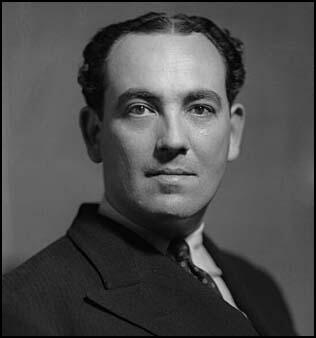
On this day in 1939 anti-fascist Ernst Toller committed suicide. According to the The New York Times: "Ernst Toller, exiled German writer and lecturer, committed suicide yesterday, hanging himself by a bathrobe cord in his apartment in the Mayflower Hotel, Sixty-first Street and Central Park West. He was 46 years old.... Friends said he had undertaken no new writing but was casting about for further material. They attributed much of his depression to the gloomy view he had to take recently of events in Europe and the threat that he saw in the extension of totalitarianism to the American continent."
Oscar Fischer, a left-wing psychiatrist, was highly critical of Toller's decision to end his life: "Ernest Toller's suicide, which created a sensation not only in the German emigration, cannot be explained merely as a 'personal collapse'. The significance of this case extends much further and the private sides of the 'sensation' recede into the background before the ideological and the political. Toller was a representative of a certain type of the German intelligentsia – and even by his death Toller represented precisely this type just as he did during his life-time. Toller’s fall symbolizes the fall of the democratic-pacifist ideology; his end coincides with the end of the illusions once concentrated in the slogan 'Never again war!' But apart from this symbolical significance, Toller’s death raises at the same time the question of the real state of mind of those circles who consider themselves the spiritual elite of the German (and not only of the German) emigration and the representatives of the German future."
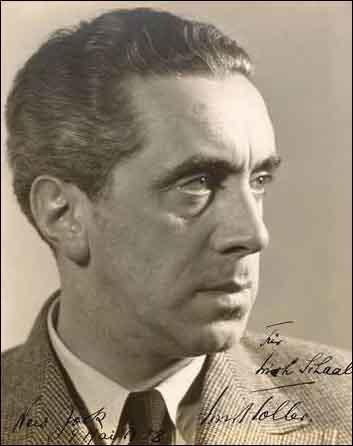
On this day in 1948 Claude McKay died. McKay was born in Jamaica on 15th September, 1890. He began writing poetry as a schoolboy. He worked as a policeman in Spanish Town and when he was twenty-two had his first volume of poems, Songs of Jamaica (1912) published.
In 1912 McKay moved to the United States where he attended Tuskegee Institute in Alabama and Kansas State University. He continued to write poetry and in 1918 his work was praised by both Frank Harris and Max Eastman. The following year, his poem, If We Must Die, was published in Eastman's journal, The Liberator.
Frank Harris encouraged McKay to obtain writing experience in England. In 1919 McKay travelled to England where he met George Bernard Shaw who introduced him to influential left-wing figures in journalism. This included Sylvia Pankhurst, who recruited him to write for her trade union journal, Workers' Dreadnought. While in London McKay read the works of Karl Marx and becomes a committed socialist.
In 1921 McKay returned to New York City and became associate editor of The Liberator. Over the next year the journal published articles by McKay such as How Black Sees Green and Red and He Who Gets Slapped. He also published his best known volume of verse, Harlem Shadows (1922).
In 1922 McKay went to Third International in Moscow where he represented the American Workers Party. He stayed in Europe where he wrote Trial by Lynching: Stories About Negro Life in America (1925) and Home to Harlem (1928), a novel about a disillusioned black soldier in the US Army who returns from the Western Front to live in a black ghetto. This was followed by other novels such as Banjo (1928), Gingertown (1932) and Banana Bottom (1933).
McKay gradually lost faith in communism and returned to the United States in 1934. Employment was difficult to find and for a while he worked for the Federal Writers' Project. McKay's published work during this period included his autobiography, A Long Way From Home (1937) and Harlem: Negro Metropolis (1940).
Unable to make a living from writing, McKay found work in a shipbuilding yard. Max Eastman pointed out: "His last years were passed in sickness; he could not write much; and he was destitute. He lived in penury, and watched his fame and popularity gradually disappear from the earth. A few years more and he would have seen them rise again, for his choice was as correct as it was courageous, and his place in the world's literature is unique and is assured." In 1943 he suffered a stroke and the following year was baptized into the Roman Catholic faith. In 1945 his essay, On Becoming a Roman Catholic, was published.
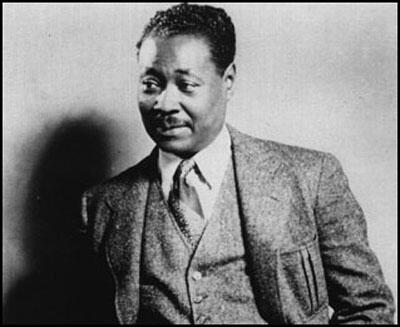
On this day in 1967 Langston Hughes died. Hughes was born in Joplin, Missouri, on 1st February, 1902. His father deserted the family and Hughes was mainly brought up by his grandmother, whose husband had been killed during the insurrection at Harper's Ferry. His grandmother taught him about Frederick Douglass and Sojourner Truth and at an early age he was introduced to the writings of William Du Bois. Hughes was also taken to hear Booker T. Washington speak at a public meeting.
Hughes became interested in poetry and was especially influenced by the work of Carl Sandburg and Walt Whitman. In 1921 his poem, Speaks of Rivers, was published in Crisis, the journal of the National Association for the Advancement of Coloured People (NAACP).
He attended Columbia University (1921-22) before working as a steward on a ship bound for Africa. Later he travelled through Italy, Holland, Spain and France before returning to New York City where he published two volumes of poetry, The Weary Blues (1926) and Fine Clothes to the Jew (1927). He also had a essay, The Negro Artist and the Racial Mountain, published in The Nation. The work was well-received and helped him win a scholarship to Lincoln University, Pennsylvania.
Hughes published a novel, Not Without Laughter (1930), a collection of short-stories, The Ways of White Folks (1934) and a play, The Mulatto (1935). Much of his work dealt with the effects of the Depression on the American people. Hughes also wrote for the Marxist journal, the New Masses and in 1937 reported on the Spanish Civil War.
Hughes visited the Soviet Union and on his return published A Negro Looks at Soviet Central Asia (1934), where he praised the country's treatment of racial minorities. He had several friends in the American Communist Party but this came to an end with the signing of the Nazi-Soviet Pact.
In 1948 he publicly endorsed Progressive Party candidate Henry Wallace for president and the following year he condemned the prosecution of Eugene Dennis, William Z. Foster, Benjamin Davis, John Gates, Robert G. Thompson, Gus Hall, Benjamin Davis, Henry M. Winston, and Gil Green under the Alien Registration Act.
A victim of McCarthyism, in March, 1953 Hughes was forced to appear before the House of Un-American Activities. Hughes refused to name the names of other radicals and denied he had ever been a member of the American Communist Party. However, in the months following the hearings, William Du Bois criticised Hughes for failing to defend the victimization of Paul Robeson. Later, he declared his radicalism an error of his youth.
Hughes published several volumes of poetry including: Shakespeare in Harlem (1942), Fields of Wonder (1947), Montage of a Dream Deferred (1951) and Ask Your Mama (1961). He also published two autobiographies: The Big Sea (1940) and I Wonder as I Wander (1956).
Langston Hughes died on 22nd May, 1967.
On this day in 1981 The Times reports that probably "no-one has done more for the emancipation of women during the century than Margery Corbett Ashby."
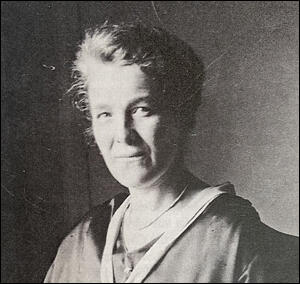
On this day in 2002 Bobby Cherry is convicted of the 1963 murder of four girls in the 16th Street Baptist Church bombing. The 16th Street Baptist Church in Birmingham was used as a meeting-place for civil rights leaders such as Martin Luther King, Ralph David Abernathy and Fred Shutterworth. Tensions became high when the Southern Christian Leadership Conference (SCLC) and the Congress on Racial Equality (CORE) became involved in a campaign to register African American to vote in Birmingham.
On Sunday, 15th September, 1963, a white man was seen getting out of a white and turquoise Chevrolet car and placing a box under the steps of the Sixteenth Street Baptist Church. Soon afterwards, at 10.22 a.m., the bomb exploded killing Denise McNair (11), Addie Mae Collins (14), Carole Robertson (14) and Cynthia Wesley (14). The four girls had been attending Sunday school classes at the church. Twenty-three other people were also hurt by the blast.
Civil rights activists blamed George Wallace, the Governor of Alabama, for the killings. Only a week before the bombing he had told the New York Times that to stop integration Alabama needed a "few first-class funerals."
A witness identified Robert Chambliss, a member of the Ku Klux Klan, as the man who placed the bomb under the steps of the Sixteenth Street Baptist Church. He was arrested and charged with murder and possessing a box of 122 sticks of dynamite without a permit. On 8th October, 1963, Chambliss was found not guilty of murder and received a hundred-dollar fine and a six-month jail sentence for having the dynamite.
The case was unsolved until Bill Baxley was elected attorney general of Alabama. He requested the original Federal Bureau of Investigation files on the case and discovered that the organization had accumulated a great deal of evidence against Chambliss that had not been used in the original trial.
In November, 1977 Chambliss was tried once again for the Sixteenth Street Baptist Church bombing. Now aged 73, Chambliss was found guilty and sentenced to life imprisonment. Chambliss died in an Alabama prison on 29th October, 1985.
On 17th May, 2000, the FBI announced that the Sixteenth Street Baptist Church bombing had been carried out by the Ku Klux Klan splinter group, the Cahaba Boys. It was claimed that four men, Robert Chambliss, Herman Cash, Thomas Blanton and Bobby Cherry had been responsible for the crime. Cash was dead but Blanton and Cherry were arrested.
In May 2002 the 71 year old Bobby Cherry was convicted of the murder of Denise McNair, Addie Mae Collins, Carole Robertson and Cynthia Wesley and was sentenced to life in prison.
